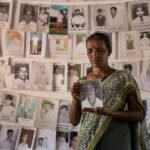In what ways did the riots affect the relationship between the Tamil community and the Sinhalese majority?
The anti-Tamil riots of July 1983 had a profound and lasting impact on the relationship between the Tamil community and the Sinhalese majority in Sri Lanka. Here are several key ways in which the riots affected this relationship:
1. **Deepening Ethnic Divisions**: The violence during the riots exacerbated existing ethnic tensions, leading to a stark division between Tamils and Sinhalese. The riots reinforced the perception of “us versus them,” making it difficult for members of both communities to interact positively.
2. **Erosion of Trust**: The inability of the Sinhalese government to protect Tamils during the riots significantly eroded trust between the two communities. Many Tamils felt betrayed by the state, viewing it as an entity that could not ensure their safety, while Sinhalese may have perceived Tamils as a threat due to the violence associated with the conflict.
3. **Radicalisation and Resentment**: The riots radicalised many Tamils, leading to increased support for militant groups like the LTTE. This shift toward armed resistance further alienated the Sinhalese majority, who often viewed the Tamil struggle for rights as a challenge to the unity of the nation.
4. **Shift in Political Dynamics**: The riots shifted the political landscape in Sri Lanka, leading to a hardening of positions on both sides. The Sinhalese government adopted more repressive measures against Tamils, while the Tamil community increasingly sought autonomy and recognition, further entrenching divisions.
5. **Community Segregation**: Following the riots, many Tamils sought safety by moving to predominantly Tamil areas, leading to increased segregation between the communities. This geographical separation diminished opportunities for inter-ethnic dialogue and understanding.
6. **Impact on Social Relations**: The riots disrupted social relations between Tamils and Sinhalese, leading to mistrust in everyday interactions. Many individuals began to view members of the other community through the lens of conflict, impacting friendships, marriages, and community dynamics.
7. **Legacy of Resentment**: The events of Black July left a legacy of resentment and grievance that continues to affect relations between the two communities. Many Tamils remember the riots as a symbol of systemic discrimination and violence, while some Sinhalese may view the subsequent armed struggle as a betrayal.
8. **Challenges to Reconciliation**: The deep scars left by the riots have made reconciliation efforts challenging. Initiatives aimed at fostering understanding and healing have often struggled to gain traction due to entrenched positions and a lack of trust.
In summary, the anti-Tamil riots of 1983 significantly damaged the relationship between the Tamil community and the Sinhalese majority in Sri Lanka. The events deepened ethnic divisions, eroded trust, and created a legacy of resentment that continues to influence inter-ethnic relations and the political landscape of the country today.






